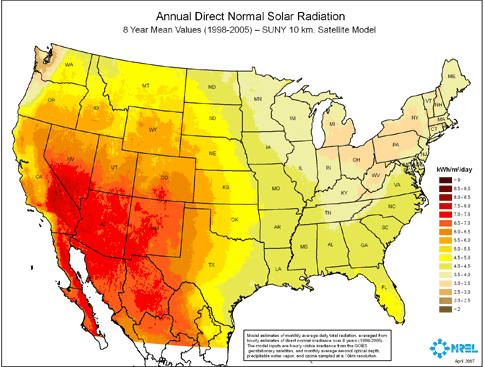SXSW Eco: The Promises and Challenges of Energy Along the Border

Photo by OMAR TORRES/AFP/Getty Images
A family passes by one of the stands promoting green energy at the Climate Village in Cancun, Mexico, on December 4, 2010.
Scott Storment has a story he likes to tell about doing green business in Mexico.
“My first wind project [in Mexico] was outside of Monterrey,” Storment recalled Thursday at a panel on U.S.-Mexico border issues at the SXSW Eco conference. He has worked on energy projects along the U.S.-Mexico border for 20 years. His latest venture, Green Hub Advisors, focuses on renewable energy development in the region. To install that first wind turbine, Storment’s group had hired a professor from the Monterrey Institute of Technology. “He told us it was really difficult to set up,” Storment said, “so we took him out there.”
After off-roading for a while they got to the turbine. “And the only way they got the tower there was because the gentleman who owned the land was a narco-trafficker,” Storment said. “Typically, he didn’t let people on his land, but he was a big fan of wind. He told us, ‘If you do do this, I want to buy wind energy.'”
Storment likes to use that story to illustrate the nuances of energy development along the border. While the region might be ripe for renewable energy projects, there are plenty of challenges as well.
The border region from California to Texas is one of huge potential, according to the panel.
While some of that potential lies in fossil fuel developments (the Eagle Ford Shale, after all, doesn’t stop at the border, and neither does oil drilling in the Gulf of Mexico), the panel mostly focused on the renewable promise of the region.
Take this map, for instance, of solar power potential along the border from the National Renewable Energy Laboratory:
As you can see, there’s plenty of potential for solar. And experts say the same goes for wind.
“This is a region that is resource-rich,” Storment said. But there are those aforementioned challenges.
For one, “the human capacity is different,” Storment said. On the U.S. side, our energy development is driven by the private market. In Mexico, it’s mostly a public enterprise. And while all of the border states in the U.S. have renewable energy standards that drive investment and construction, in Mexico there are no renewable targets. Instead, the country signed up for the Kyoto protocol and carbon credit programs. “That process was extensive and expensive,” Storment said.
But Storment said that all of this is improving. Managerial experience has “dramatically improved” on the Mexican side, as has technical expertise. And the number of renewable projects along the border is growing.
Renata Manning, with the North American Development Bank, went through some of the many projects. A wind park in Reynosa that provides energy for the grocery chain Soriana. Large-scale wind parks on the U.S. side in the Rio Grande Valley that provide power to Austin and San Antonio.
And Mexico signed a climate change law in June that sets emissions-reduction goals for the country. It got 96 percent of the vote in the Mexican Congress (the only holdouts were the communist party). Although, the panelists cautioned, in Mexico, there is often a divide between what politicians promise and what they deliver.
Apparently some things are the same on both sides of the border.
